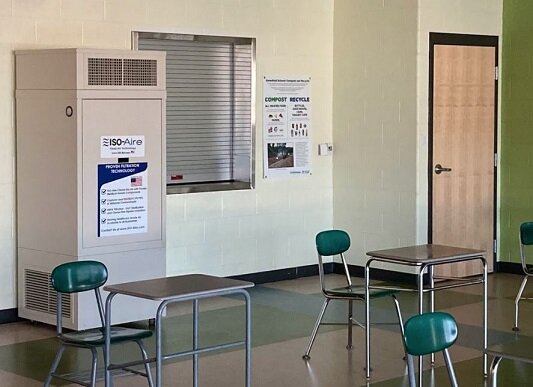Why Proper Ventilation in Schools Matters
Outdoor ventilation is not a stand-alone COVID-19 mitigation strategy for schools.
Going into the fall, some schools are under the misconception that simply opening windows will prevent the spread of COVID-19. And it is true that recommendations for schools from the Centers for Disease Control and Prevention (CDC) in regard to combating the spread of COVID-19 include increasing fresh air ventilation to the outside. However, there are several reasons to not consider this as a viable stand-alone option for keeping students, teachers, and staff safe.
In fact, an article from Education Week, “What the CDC Guidelines Don’t Say About Classroom Ventilation and COVID-19 Spread,” brought up a variety of concerns in solely focusing on this advice for keeping a school safe. The article identifies one study conducted by Zhang, Ai, and Lin (2020) that suggested that because of the coronavirus’s transmissibility and tendency to hang in the air over time, schools may not be able to rely on the typical rate of air flow from the school’s ventilation systems to be effective in eliminating viruses from the air. Furthermore, a study conducted by Blocken et al. (2021) found that aerosols (which can contain the coronavirus) continued to rise in gymnasiums even when there was ventilation. This study concluded that although increased ventilation is important, filtration units were important with producing a reduction in aerosols in the gyms by 80-90%.
The Environmental Protection Agency (EPA) has also concluded that while increasing ventilation can help lower the concentration of airborne contaminants such as viruses, it is not a strong enough measure on its own to protect people from COVID-19 and emerging variants. “The idea of improving indoor air quality by opening a window, or bringing in more fresh air to an HVAC system is easier said than done,” explained Chuck Albers, developer and owner of ISO-Aire™. “A well-balanced solution should include supplemental air purification with proven technology that ideally cleans the air 24/7. We help our partners approach indoor air quality with this strategic lens to ensure occupants inside of their classrooms, gyms, churches, and conference rooms are protected with healthy, clean air.”
Greenfield Public Schools in Greenfield, Mass. added ISO-Aire HEPA air purifiers to help with ventilation needs. Read more about their clean air investment here.
The Minnesota Department of Health (MDH) also agrees in its guidance to schools that while increasing ventilation is important, there are some concerns with bringing in outdoor air. According to MDH, outdoor air may pose health risks to a building’s occupants, as outdoor air may carry pollen and other allergens, as well as traffic-related air pollutants. For those with respiratory conditions such as asthma, this exposure can trigger symptoms. MDH stated that while “opening windows may help to bring in more fresh air to increase natural ventilation, the amount depends on temperature and pressure differences between the indoor and outdoor air.” Furthermore, in buildings with HVAC (heating, ventilation, and air conditioning) systems, opening windows and doors affect the ventilation in some spaces and even can change airflow patterns. This could potentially affect COVID spread or of other pathogens and allergens.
Christian Kähler, a University of the Federal Armed Forces physicist who studies aerosol production in Munich, Germany featured in the Nature article (2021), “Why indoor spaces are still prime COVID hotspots,” agrees that ventilating a space is better than just opening windows and doors because the weather might not always facilitate windows being open all of the time. However, Kähler warns that most HVAC systems are not set up to bring in 100% outdoor air and that most schools are only set up to bring in 20% fresh outdoor air, with the rest of the air recirculating, posing a threat to infecting students and staff inside of the building. Kähler also reminds people of the increase in environmental cost, noise, and air drafts that would be incurred by increasing ventilation. Kähler recommends that mobile air purifiers could be part of the solution and would be more energy-efficient than heating or cooling incoming outside air.
Our team at ISO-Aire offers portable, commercial-grade air purifiers with up to three layers of protection that includes a HEPA filter, ozone-free bipolar ionization, and ultraviolet-C germicidal technology. Our units are customizable, meeting the needs of all schools and that of their students and staff.


